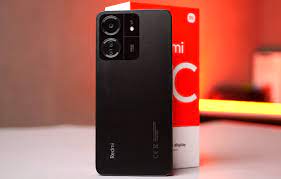The Redmi 13C from Xiaomi was introduced to the Kenyan market in time for the holiday season.
The Redmi 13C, which replaces the Redmi 12C and has some interesting improvements worth examining, is the most cheap model in the company’s Redmi series.
Although Xiaomi made several changes, such as a redesign to the design, the Redmi 13C weighs exactly the same as its predecessor. Because there is no case included with the phone, the matte back enhances its appearance while effectively hiding fingerprints and smudges. But the island of the camera is shiny.
Xiaomi shifted the fingerprint scanner from the rear to the side of the Redmi 13C, which is a very welcome change. The device has a flat design. In addition, there is an 18W Type-C charging port and a headphone jack, which is an upgrade from the Redmi 12C’s 10W micro-USB port. However, the charging brick that comes with the package has a 10W restriction.
Read also: Xiaomi unveils its first electric car, a sedan with panoramic glass roof
More features
The 6.74-inch LCD screen on the front has a resolution of 720p, a refresh rate of 90Hz (the Redmi 12C came with a conventional 60Hz refresh rate), and a maximum brightness of 600 nits. Gorilla Glass protection is also present. The selfie camera is housed in a U-shaped notch that barely interrupts the display. Another nice design modification is that this one lacks the V-shaped notch found on its predecessor.
A 50MP triple rear camera array with a 2MP macro and a depth sensor is included. Compared to the Redmi 12C’s 5MP selfie camera, the 8MP front-facing camera takes better pictures. Both cameras have a maximum of 1080p, 30 frames per second video recording.
A 5000mAh battery is included with the Xiaomi Redmi 13C.
The phone’s cost is determined by the RAM and storage choices you select:
16.99 Ksh: 4GB RAM/128GB 17.99 Ksh: 6GB RAM/128GB 20.99 Ksh: 8GB RAM/256GB
The MediaTek Helio G85 processor, which powers the phone, has RAM and storage options ranging from 4GB to 128GB, with a maximum of 8GB and 256 GB. Up to 1TB of additional storage can be added via an external microSD card. The MIUI 14 and Android 13 are turning things around.
“As the festive season approaches, Xiaomi’s Redmi 13C stands out as the ultimate gift, whether for yourself or a loved one. This affordable smartphone ensures that everyone can welcome the new year with a brand-new device boasting the best specs,” said Xiaomi in a statement.
Xiaomi unveils its first electric car, a sedan with panoramic glass roof
Xiaomi’s growth as a company
Chinese businessman Lei Jun, a Wuhan University alumnus and former president of Kingsoft Software, launched Xiaomi in April 2010 with seven partners. The business is among the leading producers of smartphones worldwide on a regular basis. Its main office is in Beijing.
The firm entered the market in 2010 with a customised version of the Android operating system that let consumers add more features and customise the interfaces of their handsets. By 2013, 30 million people were using its MIUI version of Android, and by 2023, there were over 600 million users worldwide.
Beyond smartphones, Xiaomi now sells power banks, headphones, Bluetooth speakers, security cameras, electric scooters, and even accessories like backpacks and umbrellas. Its revenue streams demonstrate its diversity. In 2022, sales of mobile phones accounted for about 60% of the company’s income, followed by IoT devices and lifestyle items (30%) and Internet services (10%).
Moreover, despite the fact that its initial direct-to-customer approach helped it to cut expenses, it has since opened more than 6,000 locations outside of China. Xiaomi announced the launch of HyperOS, a new operating system, in October 2023.




